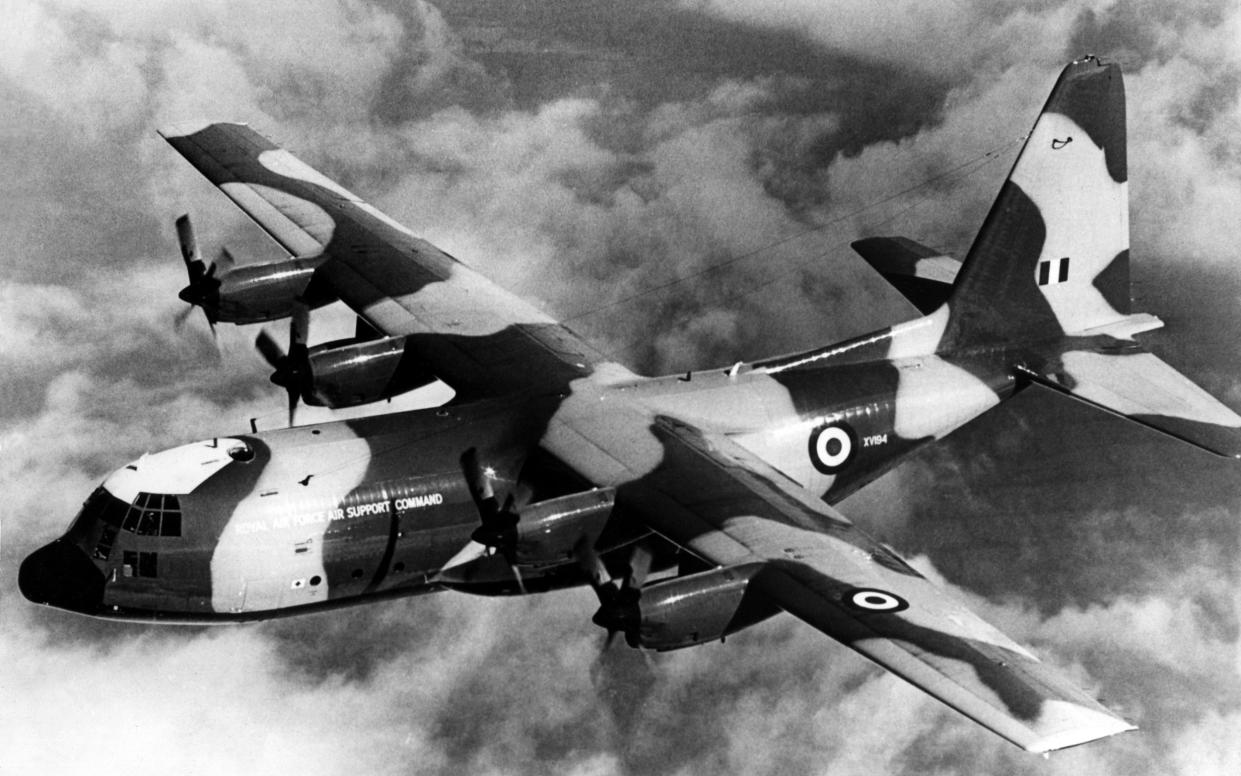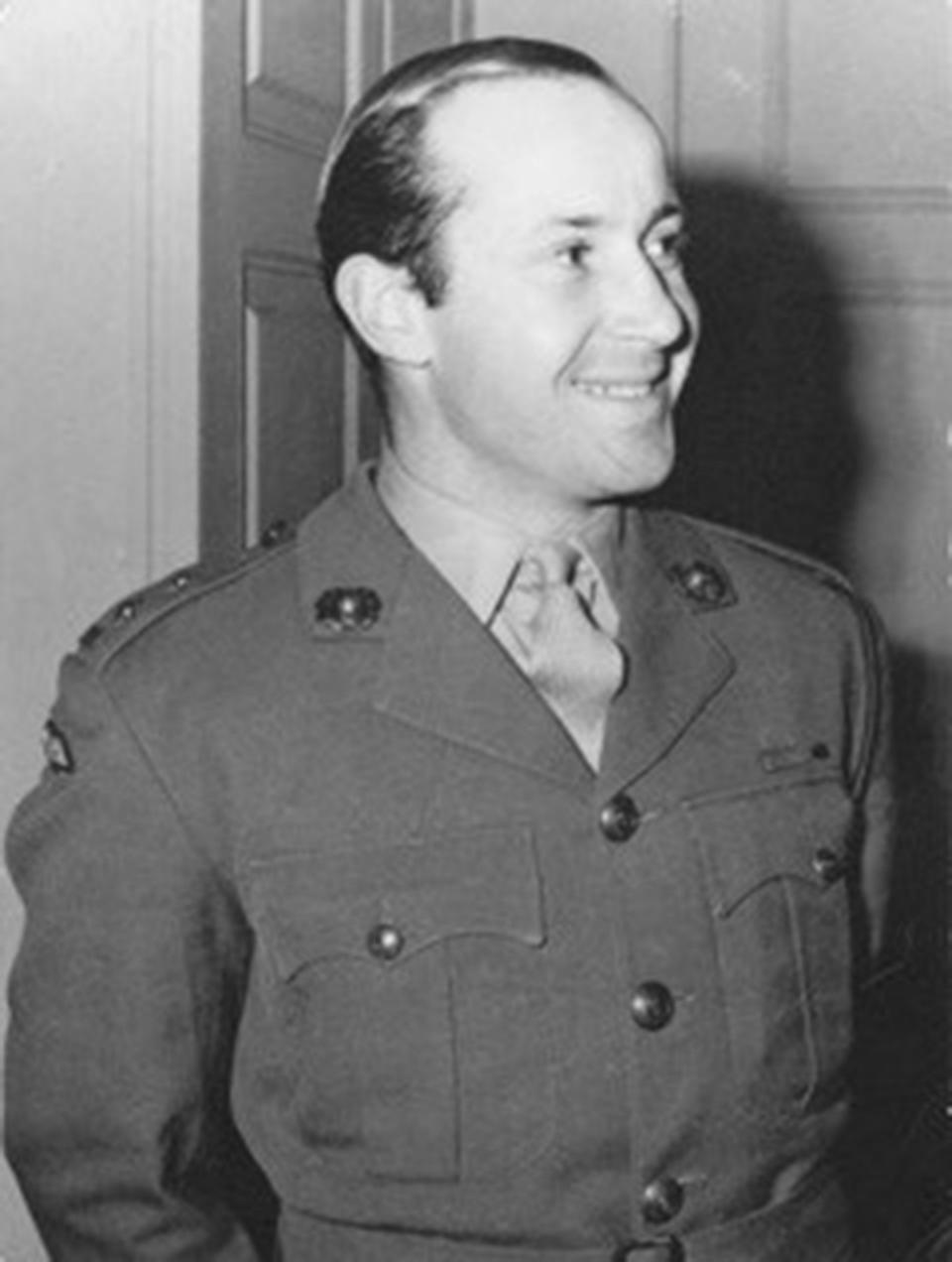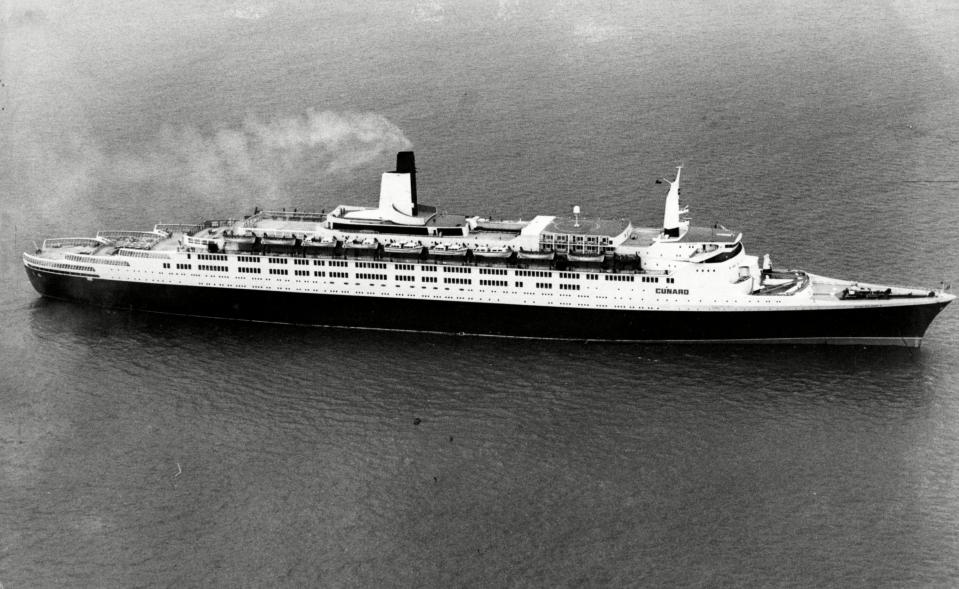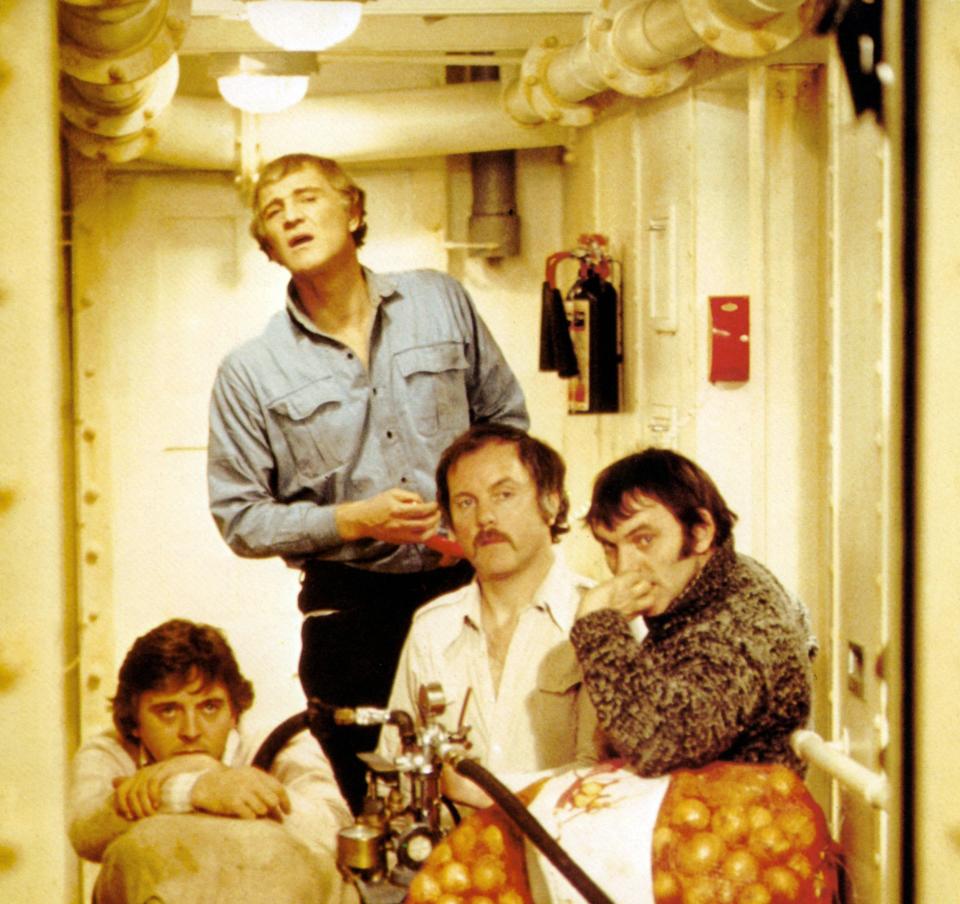The astonishing story of the RAF Hercules’s most dramatic peacetime mission

Since it first entered RAF service in 1967, the C-130 Hercules transporter, one of our largest and most recognisable aircraft, has often flown under the radar. Only a few of Fat Albert’s exploits have made the news. For instance, following the 1984 global fundraising phenomenon that was Band Aid, the Hercules delivered life-saving aid to Ethiopia; it was also crucial, during the six years of Balkan conflict, in supporting the besieged people of Sarajevo. But many today will have forgotten one of its greatest exploits: scrambling from RAF Lyneham to the mid-Atlantic in 1972, to aid the ocean liner Queen Elizabeth 2.
Early on the morning of May 18, Lt Richard Clifford, commanding officer of a specialist unit of Royal Marines, was told via a phone call from the Ministry of Defence to prepare two of his men to parachute operationally into the sea. Lacking any further intelligence, Clifford decided to go himself, taking Cpl Tom Jones as his number two; after being taken by helicopter from their base at Poole to RAF Lyneham, they were greeted by another member of their team: SSgt Clifford Oliver, an IED specialist, who’d been hastily pulled out of a training course he was conducting that morning. Those skills, at least, gave Clifford a clue as to the challenge in store.
The fourth member, Capt Robert Williams, an ammunition technical officer, was slightly delayed. Though his skills were deemed vital, it turned out that he had never jumped into the open sea before, so he’d been diverted to another air base to have a hasty lesson in parachuting. Only just before noon GMT were all four assembled on the runway at RAF Lyneham – as ready as they could be for whatever it was they were about to do.
Meanwhile, for one 47 Squadron Hercules crew at Lyneham, the day had begun in similar style. All they had been told, via a phone call from their Operations Group, was that the Ministry of Defence had sent notification of a bomb threat that was considered valid. The crew would therefore be flying elite forces to the scene without delay, along with a team from Air Despatch, with a quantity of dinghies. They were told to prepare their Hercules for a lengthy flight to the mid-Atlantic. Only when they were some 15 minutes into the journey, flying somewhere over Cornwall, were the full details of the operation revealed to the men, via a secure channel, from an accompanying Nimrod aircraft.
In a phone call to the QE2’s captain, William Law, the previous day, an anonymous man claimed that he had planted bombs in suitcases aboard the liner, which was then halfway through its journey from New York to Southampton via Cherbourg, and by this time close to the Azores. There were also, apparently, two accomplices hidden among the passengers, one of whom, the voice said, was “a cancer sufferer with not long to live”. The devices would explode on May 18 if a $350,000 ransom, in $10 and $20 notes, wasn’t paid. The objectives of the mission were therefore straightforward: the Hercules was to rendezvous with the QE2, and enable the soldiers to parachute in, locate the bombs, and make them safe.

The weather had been forecast to be clement; it was not. As the flight headed out over the ocean, squally winds buffeted it relentlessly. Williams was violently sick for the entire four-hour journey; nonetheless, Clifford continued to instruct him in how to parachute. It was decided that Jones and Oliver, dropping first, would take the bulk of the kit, leaving the two officers to drop behind them, consecutively, on a second run. (“To ensure you don’t drown when you hit the water,” Clifford offered as reassurance to the green-looking Williams.) From the surface of the Atlantic, they would be picked up by the QE2, which was still steaming east, and brought aboard.
Yet the weather continued to work against the mission, with the cloud base as low as only 400–600 feet. As the Hercules approached the QE2, at around midday local time, the crew couldn’t see the ship. The wind was at 20 knots, and there were five-foot waves to contend with – conditions so poor that in normal circumstances a drop would never have been attempted. With almost 2,500 lives at stake, however, there was no option, so on the flight deck, a decision was made by the pilot to approach the liner at just 300 feet above sea level. As soon as he saw it, he would immediately apply full power, and “pop up” to 800 feet, the minimum dropping-height. The four-man team, including Williams – now weak from constant vomiting – would jump blind into the turbulent water.
On the first run in, with the port side-door open, the team clung on to the aircraft, tossed around at barely 100 feet above the churning sea. At any moment, they would feel the pilot “pop” up the Hercules’s nose, then climb almost vertically to a height from which, if necessary, the soldiers would have time to deploy their reserve parachutes as they fell. Those QE2 passengers who were brave (or sea-sick) enough to be out on deck must have been bemused to see the Hercules appear at the base of the clouds, then immediately shoot straight up into them. No wonder the whole side of the ship was alight with camera flashes, as those on deck, oblivious to the seriousness of the situation, looked on in awe.

Aboard the Hercules, it was a different, and rather more stressful, story. As they reached the liner, the pilot took the plane into a steep and speedy climb. The entire team and crew went into negative G. Despite the heavy kit, the parachutists became weightless, floating in the back of the aircraft, clinging tightly to the airframe – until, finally, the green light came on. SSgt Oliver jumped first, with Cpl Jones immediately behind him; then, on the second run, Lt Clifford pushed Capt Williams out ahead of him. The men all hit the water hard and fast, going some way under before bobbing up again; but, while they feared for their kit, their flotation devices worked. (Though after his vomiting, his maiden parachute jump, his immersion in the freezing Atlantic and – the final insult – the ingestion of about a gallon of salt-water, Williams was in poor fettle.)
The liner’s efficient crew, having already got a lifeboat into the water, were quick to rope the men in and up the 40 or so feet they needed to scale to get aboard, so they were quickly able to get down to business. While the QE2’s captain and crew corralled the astonished passengers as far away as possible, Clifford and Williams set about examining three suspicious suitcases that had already been discovered on board. Oliver and Jones, meanwhile, went to search the cars down below, several of which were without their owners, who’d opted to fly back from America to Britain instead of taking the ship.
But by the time the cars, and two of the three cases, had been searched and found empty, only 18 minutes remained until the supposed detonation time. The decision was made to conduct a controlled explosion on the final suitcase. After blowing its lock, the soldiers were relieved to discover that it, too, contained nothing more menacing than crackling cellophane: it was full of new clothes, not even unwrapped. It seemed that the QE2 had been the victim of an elaborate hoax.

With it now being clear that the back-up lifeboats weren’t going to be needed, the Hercules crew made their way back to Lyneham, leaving the bomb-disposal team at sea, and hoping to remain incognito till disembarking – not least because, literally, they had nothing to wear. The MoD, however, had other ideas. Though the military concurred with the men’s wish to remain “below decks”, the MoD overruled them. Keen to capitalise on the chance to garner some good publicity for British forces, they demanded that someone from the press be allowed to join the ship at Cherbourg, so that the soldiers’ heroics be splashed across the British newspapers. The men agreed, but only on the understanding that they could meet the passengers first – done in clothes hastily assembled from the liner’s onboard shops – and they took their meals in the wardroom, not at the captain’s table.
The hoaxer, it transpired, was a 48-year-old New York shoe salesman named Joseph Landisi. He was soon arrested and charged with the threat to the QE2, as well as similar ones against American Airlines aircraft and air terminals, and went on to be sentenced to 10 years in jail. Clifford, Williams, Oliver and Jones, meanwhile, were all awarded the Queen’s Commendation for Brave Conduct.
The air crew who’d delivered the soldiers on their audacious mission, however, received nothing. For them, it was all in a day’s work. And for the trusty Hercules itself, so often an unsung hero, that would be the case for another 40 years. It remained the first in and last out of any skirmish or conflict, right up to its last RAF mission in the summer of 2023, when it evacuated hundreds of people from the war raging in Sudan. Today, the QE2 has become a floating hotel in Dubai, where it still welcomes paying guests. But the Herc, perhaps the most recognisable, reliable and beloved aircraft that military aviators have ever known, has retired. No other aircraft in modern history has made such an impact on the capability of our Armed Forces. The RAF may never see Fat Albert’s like again.
Hercules by Scott Bateman is published by Michael Joseph on May 23

